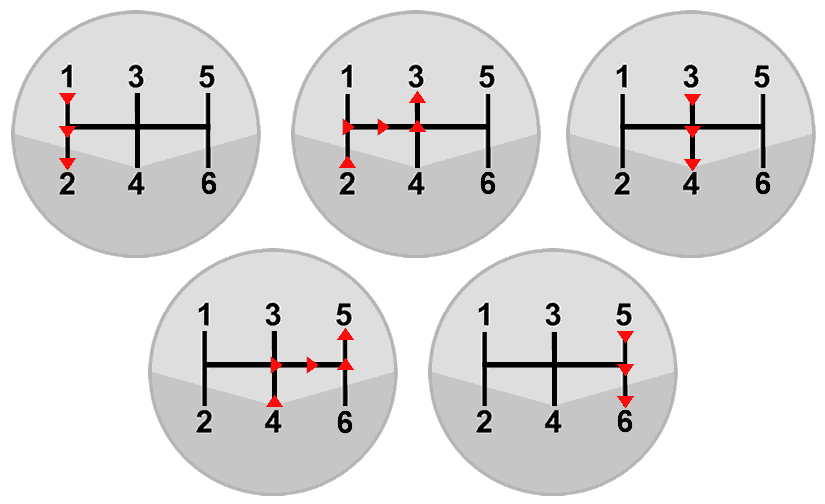Sequential Gear Changing Explained
In terms of learning to drive and the driving test, there does seem to be some confusion about sequential gear changing and when it should be used. So here, we shall answer some of those questions.
Sequential Gear Changing Explained
The word ‘sequential’ means to follow a logical order, therefore sequential gear changing means to change gear in order. Sequential gear changing can be done either up or down through the gears, so you would change from 1st, 2nd, 3rd, 4th and 5th (6th if you have it) when changing up gear, and 5th, 4th , 3rd, 2nd and 1st when changing down gear.
Sequential Versus Block Gear Changing
Block gear changing is now the preferred method for changing down gears and on occasion, for changing up gear too (see what is block gear changing). For the vast majority of the time, for learning to drive, you’ll change up gear sequentially.
The only occasion where you might want to block change up gear is if you’re gaining a lot of speed on a dual carriageway slip road (as an example) in 3rd and when on the carriageway you may have no need for 4th gear, so block change directly into 5th.
Block gear changing is most beneficial when changing down gear. You’ll generally use the foot brake to slow the vehicle and miss out on unnecessary gears. This is not only easier than changing down gear sequentially (there’s less to do), but it also means you have both hands on the steering wheel more of the time.
Should You Change Down Gears When Stopping?
Whether you should change down gears when stopping depends on the situation and the vehicle you’re driving. For example, if you’re driving through town at 30 mph in 4th gear and are coming to a stop ahead, you simply need only to depress the clutch and select 1st gear just before you stop the car.
You can also do this from higher speeds in 5th or even 6th gear though this may be more of a struggle for your car. Cars have different gear ratios and range in how flexible they are based on age. Where possible you should use the foot brake to slow down when stopping and select 1st gear just before you stop. If your car is struggling with this (you should be able to hear it), then you’ll need to change down into 3rd before stopping.
Can You Stop in any Gear?
If you’re stopping in traffic, select 1st gear just before you stop the vehicle. If you’re parking the vehicle then yes, simply stop in what gear you happen to be in. There’s no need to change down gears sequentially until you reach 1st gear.
Changing Down Gear and the Driving Test
Some drivers persistently change down gear sequentially rather than block change. This could be for example an older driver who was originally taught to to slow the vehicle by changing down gears (rather than primarily using the foot brake) and they need to take a driving test again for some reason. Or it could be a new learner driver being taught by a family member or friend and not being taught the correct methods for changing gears.
So the question is, can sequential changing down gear fail a driving test? In general, if you maintain good control of the vehicle then you wont fail the driving test.
Having said that, the examiner would prefer to see modern block gear changes and if your persistent changing down gear is maintained throughout the test, you may receive a (minor) fault simply because it’s unnecessary extra work that you’re doing.
